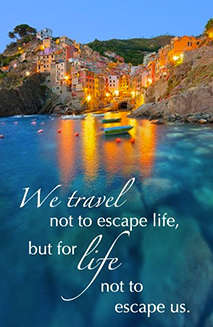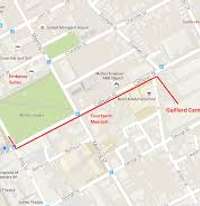- 1800-123-5555
- Travel Agent? Join Us
- Blog
- Offers

Information About Mysore Tourism
Take a walk through the luxurious and royal roads of Mysore!
Rated 4.17/5 ( based on 1181 reviews )
Mysore Travel Guide
Known for its cultural heritage, Mysore is a prominent travel destination in Karnataka. Along with a Mysore tourist map, it’s essential to know more about city’s weather, historical places, and sightseeing information. Here’s a detailed Mysore travel guide with key information about Mysore below
Culture of Mysore
Mysore is dubbed as the Cultural Capital of Karnataka. Since the heydays of the Vijayanagar Empire and the Wodeyar rulers, the city has embraced all religions and people with open arms. Today, the city is well known for its lavish palaces, museums, and the festivities. From Mysore Pak to Mysore silk saree, the city has branded itself via various food and handicraft. The city is also a popular hub of handicrafts, paintings, and silk production.
Climate of Mysore
Mysore weather is mostly temperate throughout the year. The temperatures during summer in Mysore are not as scorching as in the northern Karnataka. Due to its higher elevation, the city experiences a pleasant weather condition. October through March is the best time to visit Mysore, be it a family holiday or a honeymoon. Avoid visiting Mysore in the monsoon season, when the rainfall is too heavy.
Food of Mysore
Mysore food has influences from traditional Udupi cuisine. Served with sambhar and coconut chutney, Mysore Masala Dosa is a common breakfast here. Mysore Pak is another specialty that perhaps originated from the city. This sweet dish is generally made out of gram flour and sugar. Other staple food in Mysore are:
Bisibele Baath: Made of rice and lentils Raagi and Akki Rotis: Made of raagi or rice flour Raagi Mudde
On formal or ceremonial occasions, lunch or dinner is served on a plantain leaf. Dinner or lunch spread includes gojju (a sweet curry), rasam, chutney, and papad.
Festivals of Mysore
Celebrated every year in September or October, Dussehra or Dasara festivities in Mysore were started by Raja Wodeyar I in 1610. On Vijayadashami, the last day of 10-day Dasara celebrations, there is a special prayer ceremony to Goddess Chamundeshwari. Later, a ceremonial procession, known as Jumboo Savari, passes through the streets of Mysore. This stately procession includes the idol of the Goddess Chamundeshwari, decorated elephants, and colorful tableaux.
Popular Packages
Unlimited Choices. Trusted Agents. Best Prices. Happy Memories.
Cities:
- Kolar
Starting from:
₹1,000/-
₹1,111/-10% OffCities:
- Sakleshpur
Starting from:
₹3,800/-
₹5,429/-30% OffCities:
- Kolar
Starting from:
₹4,000/-
₹4,301/-7% OffCities:
- Chikmagalur
Starting from:
₹4,500/-
₹6,923/-35% OffCities:
- Nandi hills
Starting from:
₹5,000/-
₹5,376/-7% OffCities:
- Chikmagalur
Starting from:
₹5,500/-
₹8,462/-35% OffCities:
- Coorg
Starting from:
₹6,000/-
₹9,231/-35% OffCities:
- Mysore
Starting from:
₹6,710/-
₹7,138/-6% OffCities:
- Mysore
Starting from:
₹6,999/-
₹7,446/-6% OffCities:
- Mysore
Starting from:
₹7,319/-
₹8,043/-9% OffCities:
- Coorg
Starting from:
₹7,750/-
₹11,923/-35% OffCities:
- Mysore
Starting from:
₹7,857/-
₹8,448/-7% OffCities:
- Coorg
Starting from:
₹7,930/-
₹8,714/-9% OffCities:
- Gokarna
Starting from:
₹7,999/-
₹8,510/-6% OffCities:
- Gokarna
Starting from:
₹7,999/-
₹8,510/-6% OffCities:
- Gokarna
Starting from:
₹7,999/-
₹8,510/-6% OffCities:
- Gokarna
Starting from:
₹7,999/-
₹8,510/-6% OffCities:
- Gokarna
Starting from:
₹7,999/-
₹8,510/-6% OffCities:
- Mysore
Starting from:
₹7,999/-
₹8,695/-8% OffCities:
- Hampi
Starting from:
₹8,000/-
₹8,696/-8% OffOur experts would love to create a package just for you!
Fill in your requirements here >
Fastest Growing Holiday Marketplace
650+
Verified Agents
22 Lac+
Happy Travellers
65+
Destinations
Easy, Secure & Reliable
Traveltriangle
Verified
Stringent
Quality Control
24/7
Support
Mysore Tour Packages
Read on to find out why our customers love us!
Pmagadum
Pune
Pmagadum's 5 days trip to Mysore
PURVA SHINDE
Pune
Purva's 4 days trip to Mysore
Panduran
Karnataka
Panduran's 3 days trip to Mysore
Chandrakalaprabhakar
Bangalore
Chandrakalaprabhakar's 3 days trip to Mysore
Venkata Phaneendra Kumar Challapalli
Vijayawada
Venkata's 5 days trip to Mysore
Mani
Hosur
Mani's 3 days trip to Mysore
Sagar Shinde
Pune
Sagar's 6 days trip to Mysore
Praveen Rudrawadi
Bengaluru
Praveen's 3 days trip to Mysore
Ramboshotram
Madurai
Ramboshotram's 7 days trip to Mysore
Alpesh Acp
Mumbai
Alpesh's 5 days trip to Mysore
Want best packages handpicked just for you?
Fill the form and get a callback from our holiday experts
How It Works
Personalise This Package
Make changes as per your travel plan & submit the request.
Get Multiple Quotes
Connect with top 3 agents, compare quotes & customize further.
Book The Best Deal
Pay in easy installments & get ready to enjoy your holiday.















